
Praia de Iracema: The Heartbeat of Fortaleza
Discover Praia de Iracema, Fortaleza's cultural and nightlife hub where history, art, and scenic beauty blend seamlessly, offering tourists an unforgettable experience.
Praia de Iracema, often referred to as the cultural soul of Fortaleza, offers an eclectic blend of history, art, and vibrant nightlife. This beachfront neighborhood is named after Iracema, a character from Brazilian literature, and her essence is felt in the romantic and bohemian atmosphere that permeates the area. Strolling along the Beira Mar Avenue, you'll encounter a lively boardwalk brimming with artisanal vendors, street performers, and picturesque views of the Atlantic Ocean. The iconic Ponte dos Ingleses (English Bridge) extends into the sea, providing a perfect spot for watching stunning sunsets and spotting playful dolphins. Cultural enthusiasts will find the Dragão do Mar Center of Art and Culture an unmissable stop. This expansive complex houses museums, theaters, and a planetarium, offering a deep dive into the rich artistic heritage of Ceará. After soaking up culture, visitors can enjoy a meal at one of the many seaside restaurants, where fresh seafood and traditional Brazilian dishes tantalize the taste buds. As night falls, Praia de Iracema transforms into a nightlife hub, with numerous bars, clubs, and live music venues opening their doors. Whether you're in the mood for samba, forró, or contemporary beats, the neighborhood's vibrant energy ensures an unforgettable evening. With its blend of scenic beauty, cultural richness, and lively entertainment, Praia de Iracema captures the essence of Fortaleza, offering tourists an immersive and unforgettable experience.
Local tips in Praia de Iracema
- Visit the Ponte dos Ingleses at sunset for breathtaking views and potential dolphin sightings.
- Explore the Dragão do Mar Center of Art and Culture for a taste of Ceará's rich artistic heritage.
- Try local seafood dishes at the beachfront restaurants for an authentic culinary experience.
- Be cautious of your belongings, especially at night, as the area can get crowded.
- Check out live music venues for a taste of local rhythms like samba and forró.
Praia de Iracema: The Heartbeat of Fortaleza
Praia de Iracema, often referred to as the cultural soul of Fortaleza, offers an eclectic blend of history, art, and vibrant nightlife. This beachfront neighborhood is named after Iracema, a character from Brazilian literature, and her essence is felt in the romantic and bohemian atmosphere that permeates the area. Strolling along the Beira Mar Avenue, you'll encounter a lively boardwalk brimming with artisanal vendors, street performers, and picturesque views of the Atlantic Ocean. The iconic Ponte dos Ingleses (English Bridge) extends into the sea, providing a perfect spot for watching stunning sunsets and spotting playful dolphins. Cultural enthusiasts will find the Dragão do Mar Center of Art and Culture an unmissable stop. This expansive complex houses museums, theaters, and a planetarium, offering a deep dive into the rich artistic heritage of Ceará. After soaking up culture, visitors can enjoy a meal at one of the many seaside restaurants, where fresh seafood and traditional Brazilian dishes tantalize the taste buds. As night falls, Praia de Iracema transforms into a nightlife hub, with numerous bars, clubs, and live music venues opening their doors. Whether you're in the mood for samba, forró, or contemporary beats, the neighborhood's vibrant energy ensures an unforgettable evening. With its blend of scenic beauty, cultural richness, and lively entertainment, Praia de Iracema captures the essence of Fortaleza, offering tourists an immersive and unforgettable experience.
Iconic landmarks you can’t miss
Aterro da Praia de Iracema
Discover the beauty and culture of Aterro da Praia de Iracema, a premier urban beach park in Fortaleza, Brazil, perfect for relaxation and adventure.
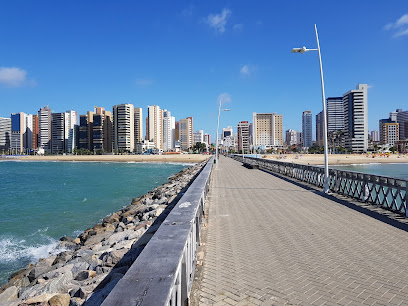
Espigão Rui Barbosa
Explore the breathtaking Espigão Rui Barbosa, a coastal gem in Fortaleza offering stunning ocean views and vibrant local culture.
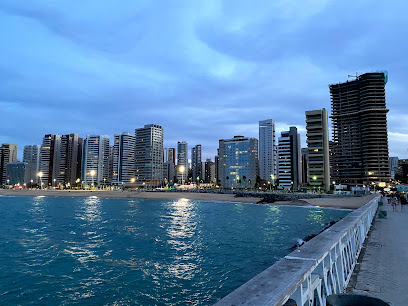
Guardian Iracema Statue
Discover the cultural essence of Fortaleza at the breathtaking Guardian Iracema Statue, a must-visit landmark embodying local folklore and heritage.
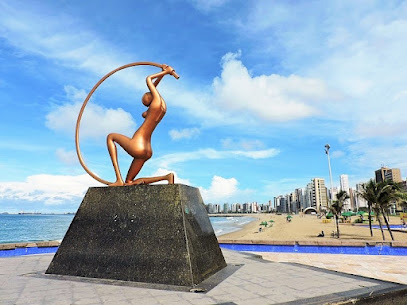
Calçadão da Praia de Iracema
Experience the vibrant Calçadão da Praia de Iracema, where stunning ocean views meet lively culture and delicious cuisine in Fortaleza.
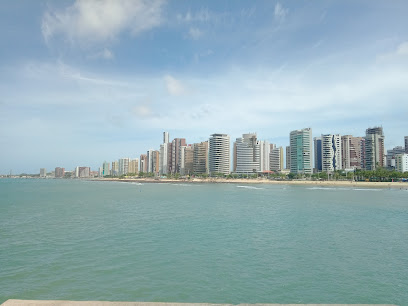
Pier da Praia de Iracema
Explore Pier da Praia de Iracema in Fortaleza: A scenic fishing pier blending stunning ocean views with vibrant local culture and delicious seafood.
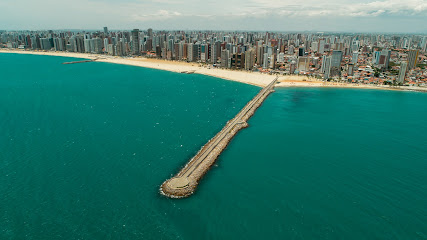
Estátua de Iracema
Explore the Iracema Statue in Fortaleza, a stunning symbol of Brazil's folklore and cultural heritage, surrounded by lush greenery and artistic expression.
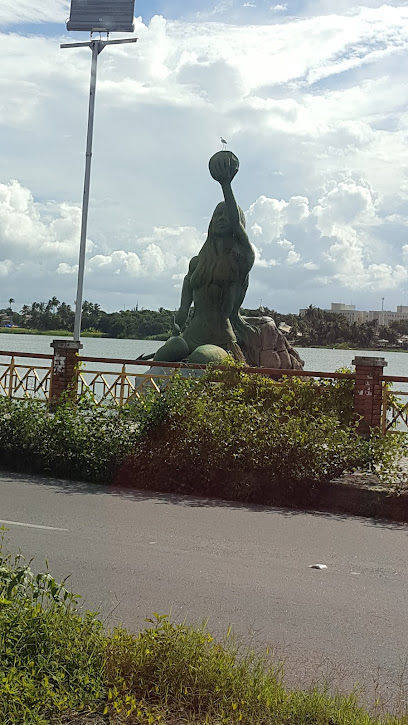
Praia dos Crush Fortaleza
Discover the beauty of Praia dos Crush in Fortaleza: a vibrant beach paradise perfect for relaxation, adventure, and unforgettable sunsets.
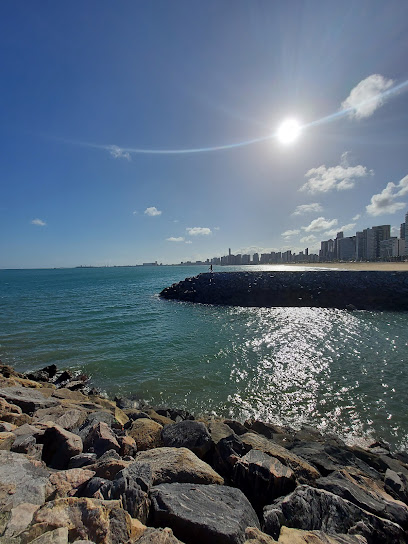
Praia de Iracema
Discover the enchanting beauty and vibrant culture of Praia de Iracema, a stunning beach destination in Fortaleza, Ceará, perfect for relaxation and adventure.
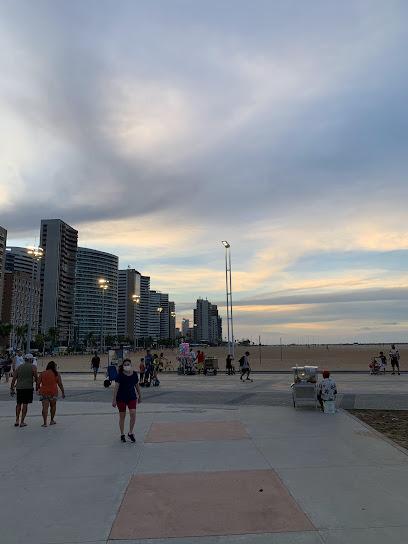
Monumento a Iracema.
Discover the iconic Iracema Monument in Fortaleza, a stunning tribute to Brazilian folklore located along the beautiful Praia de Iracema.
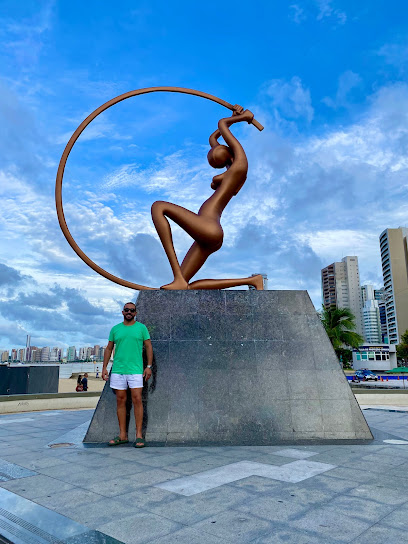
Estátua de Iracema e Martim
Explore the captivating Estátua de Iracema e Martim in Fortaleza, a monument that beautifully narrates a legendary love story amidst stunning coastal views.
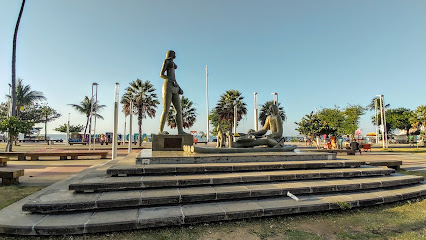
Unmissable attractions to see
Espigão Rui Barbosa
Explore the picturesque Espigão Rui Barbosa along Praia de Iracema, where stunning coastal views meet vibrant local culture in Fortaleza.
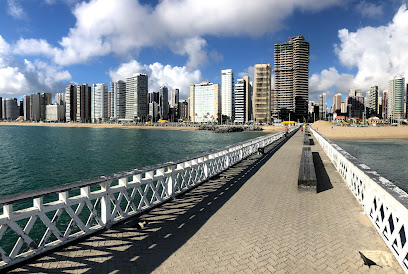
Fortaleza Secretary of Tourism
Explore the vibrant history and culture of Fortaleza at the Secretary of Tourism Museum, a must-visit for every traveler in Ceará.
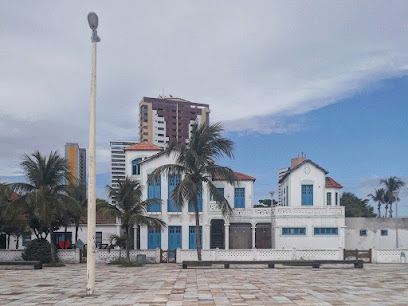
Praia dos Crush Fortaleza
Experience the beauty and vibrant culture of Praia dos Crush in Fortaleza, a premier beach destination in Ceará, Brazil.
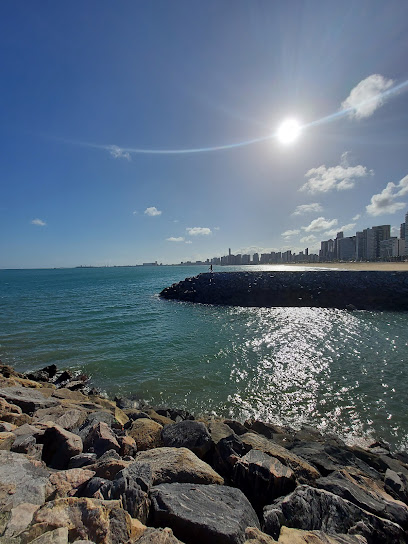
Praia de Iracema
Explore the vibrant beauty of Praia de Iracema, a beach destination in Fortaleza, Ceará, where culture and relaxation meet.
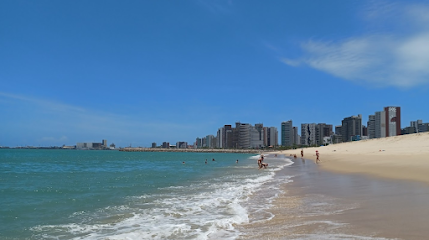
Monumento a Iracema.
Discover the beauty and cultural significance of the Monumento a Iracema at Praia de Iracema, a must-see landmark in Fortaleza, Brazil.
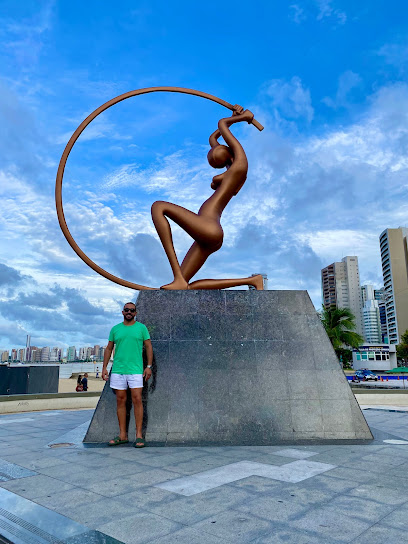
Essential places to dine
Geppos Praia - Restaurante na Praia de Iracema
Experience the best of Brazilian cuisine at Geppos Praia on Fortaleza's beautiful Praia de Iracema - where flavor meets ocean views.
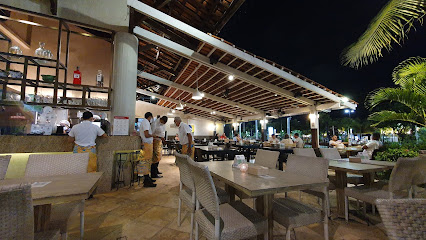
La Bella Itália
Experience authentic Italian cuisine at La Bella Itália in Praia de Iracema, Fortaleza - where every dish tells a story.
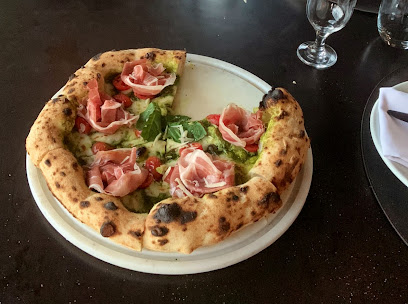
Mar de Rosas
Experience authentic Brazilian flavors at Mar de Rosas in Praia de Iracema, where every dish tells a story of Ceará's rich culinary heritage.
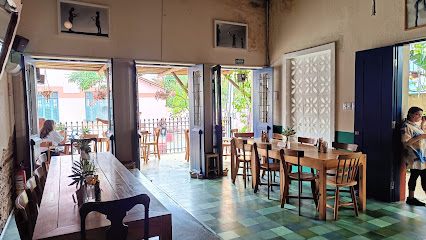
Forneria da Praia
Discover Forneria da Praia in Fortaleza: A vibrant seafood haven blending Brazilian flavors with live music for an unforgettable dining experience.
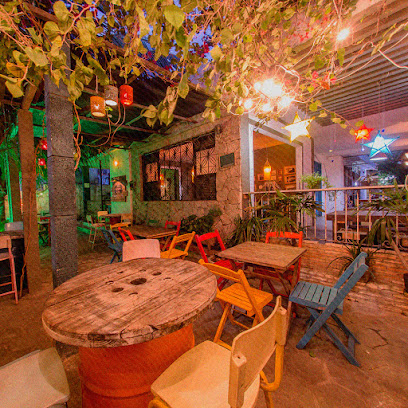
Moranga Bistrô
Discover the exquisite flavors of Modern French cuisine at Moranga Bistrô in Fortaleza's vibrant Praia de Iracema.
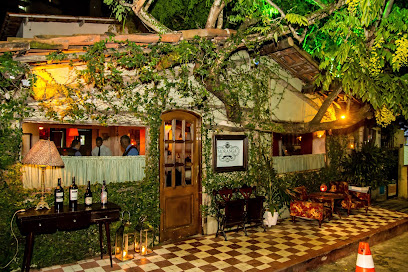
La Massa
Discover La Massa in Praia de Iracema: A delightful restaurant offering grilled specialties, fresh seafood, and mouthwatering pizzas at affordable prices.
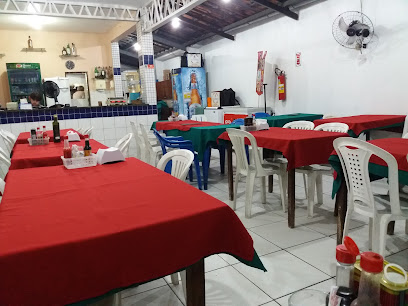
O Capo Coffee Bar & Restô
Discover delightful Italian cuisine at O Capo Coffee Bar & Restô in Praia de Iracema – where local flavors meet culinary excellence.
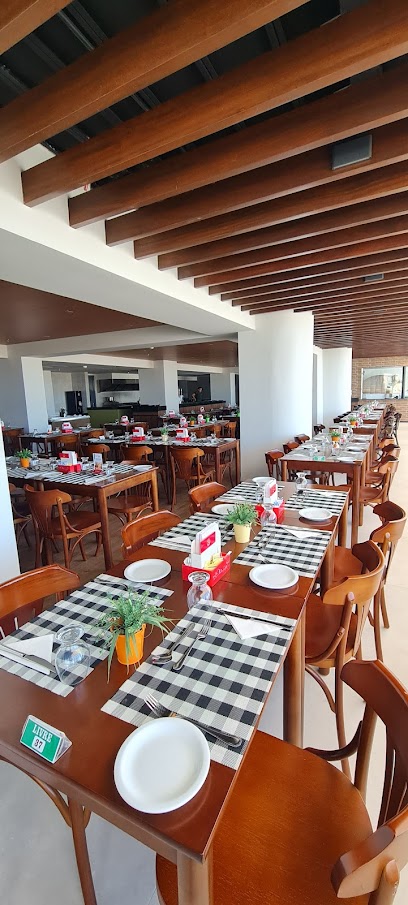
Marcel Restaurante.
Discover exquisite French cuisine at Marcel Restaurante in Praia de Iracema, where every dish tells a story and every visit is unforgettable.
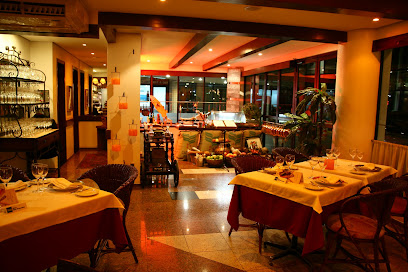
Cantinho de Iracema
Experience authentic Brazilian cuisine at Cantinho de Iracema in Praia de Iracema, Fortaleza – where every dish tells a flavorful story.
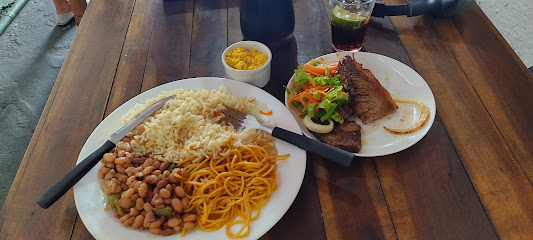
Café Bistro Praia de Iracema
Discover delightful dining at Café Bistro Praia de Iracema - where local flavors meet breathtaking beach views in Fortaleza.
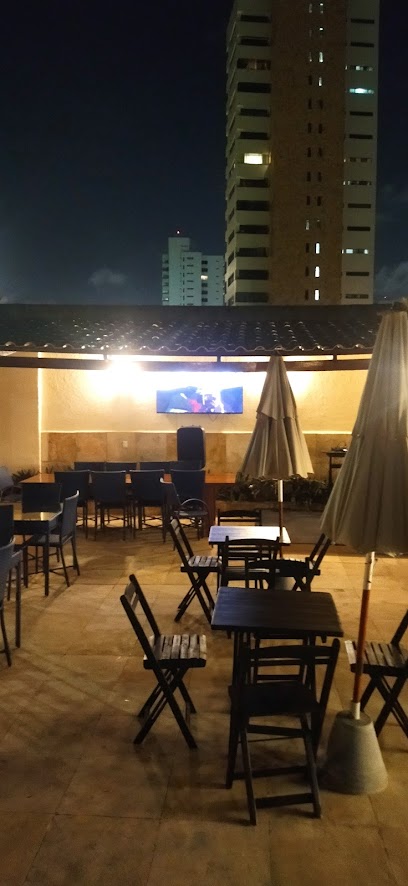
Markets, malls and hidden boutiques
Pátio Central
Explore Pátio Central in Praia de Iracema, Fortaleza - a vibrant shopping mall with local brands, delicious dining, and cultural experiences.
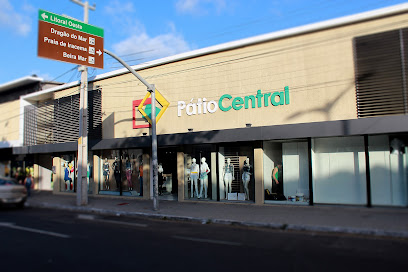
Calçadão da Praia de Iracema
Explore the vibrant Calçadão da Praia de Iracema in Fortaleza, where beautiful views, local culture, and lively atmosphere create unforgettable memories.

The Sunga
Explore The Sunga in Praia de Iracema for stylish beachwear and accessories in Fortaleza, enhancing your sun-soaked adventures in Brazil.
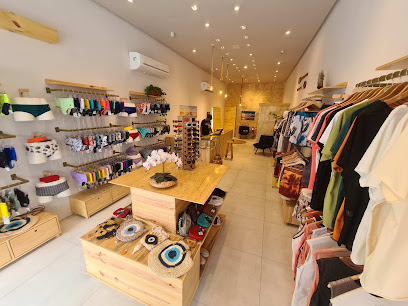
Greenish - Praia de Iracema
Experience the thrill of surfing at Greenish - Praia de Iracema, the ultimate destination for surf enthusiasts in Fortaleza, Brazil.
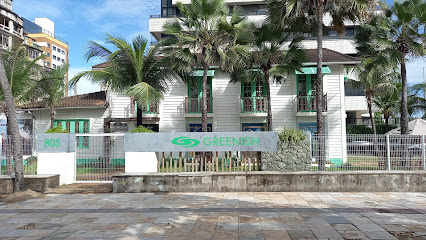
PUMP | @adoropump
Explore PUMP in Praia de Iracema for trendy women's clothing and a taste of Fortaleza's unique fashion culture.
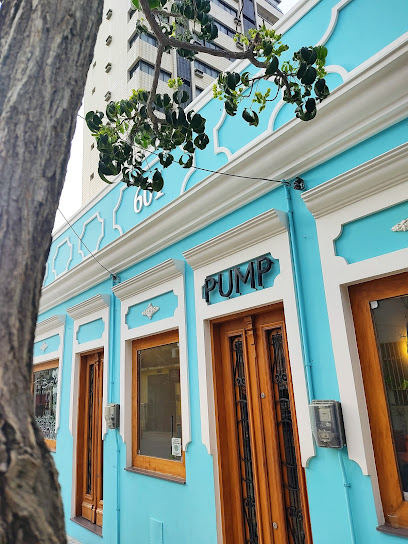
Bikinis Caribbean Flower
Discover Bikinis Caribbean Flower, the ultimate beach clothing destination in Fortaleza, offering stylish swimwear and accessories for your perfect beach day.

Lariflor
Explore Lariflor, a floral paradise in Praia de Iracema, where vibrant plants and unique decor items come together to inspire creativity and joy.

Iracema Moda Feminina
Discover the essence of Brazilian fashion at Iracema Moda Feminina, where style meets comfort in the heart of Fortaleza's Praia de Iracema.

Boutique de Iracema
Discover the latest styles at Boutique de Iracema, a chic women's clothing store in Fortaleza's vibrant Meireles neighborhood.

sabrinamodapraia
Discover the essence of Fortaleza's fashion at Sabrina Moda Praia, where trendy women's clothing meets the vibrant spirit of Praia de Iracema.
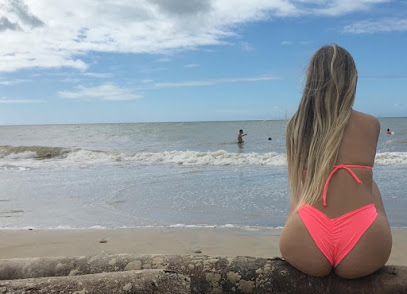
Essential bars & hidden hideouts
Pirata Bar
Discover the vibrant nightlife at Pirata Bar, a premier destination in Fortaleza offering great drinks, lively music, and an unforgettable party atmosphere.
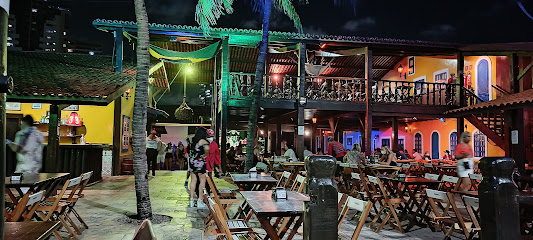
Bar do Mincharia
Discover the vibrant nightlife and authentic flavors at Bar do Mincharia in Fortaleza's Praia de Iracema, a perfect blend of culture and cuisine.
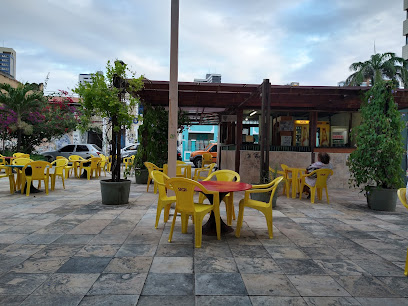
JamRock
Experience the vibrant nightlife at JamRock, a must-visit pub in Fortaleza's Praia de Iracema, offering live music, diverse drinks, and an unforgettable atmosphere.
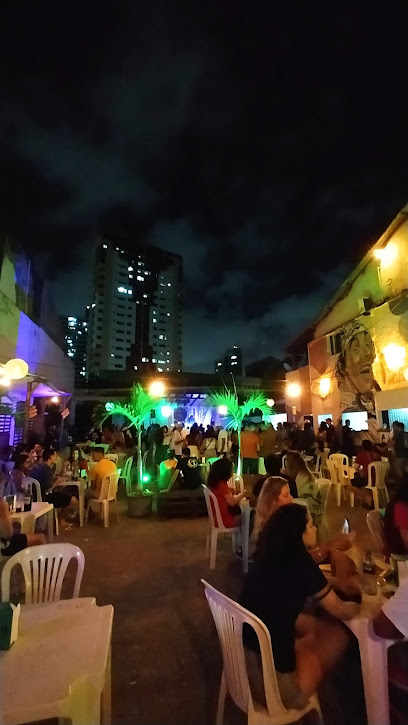
Ritmo Urbano
Experience the vibrant nightlife of Fortaleza at Ritmo Urbano, where innovative cocktails meet an energetic atmosphere in Praia de Iracema.
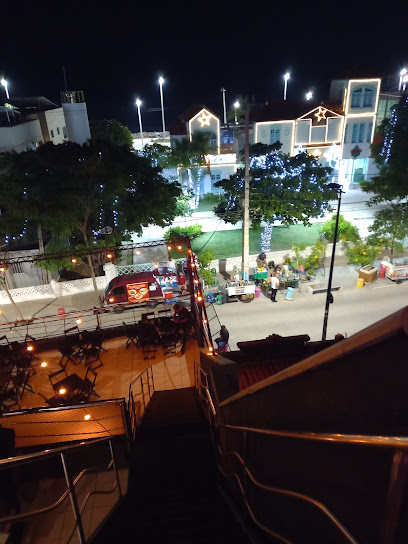
Gandaia Bar & Club
Experience the vibrant nightlife at Gandaia Bar & Club in Fortaleza, where local flavors meet electrifying entertainment and a welcoming atmosphere.
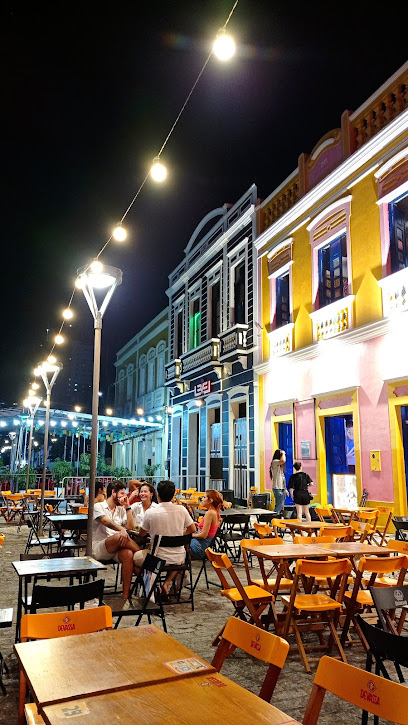
Zipi Bar
Discover the vibrant nightlife of Fortaleza at Zipi Bar, where delicious cocktails and friendly vibes create an unforgettable experience.

Bar do Reggae
Discover the rhythmic pulse of Fortaleza's nightlife at Bar do Reggae, where vibrant music and refreshing drinks create an unforgettable experience.
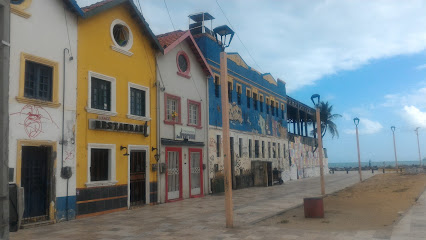
Longarinas Bar
Experience the vibrant nightlife of Fortaleza at Longarinas Bar, where delicious cocktails and a lively atmosphere await in Praia de Iracema.
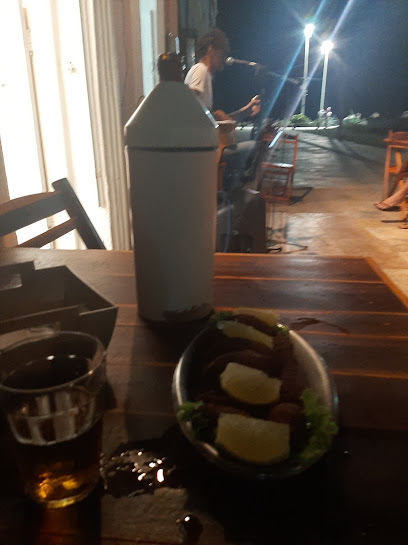
Pico do Rasta
Experience the vibrant nightlife and delicious cocktails at Pico do Rasta, the iconic bar in Praia de Iracema, Fortaleza.
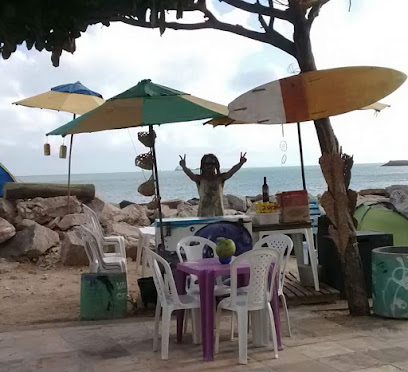
Barraca ponto de equilíbrio
Experience the vibrant culture and stunning views at Barraca Ponto de Equilíbrio, a must-visit beach bar in Fortaleza, Ceará.
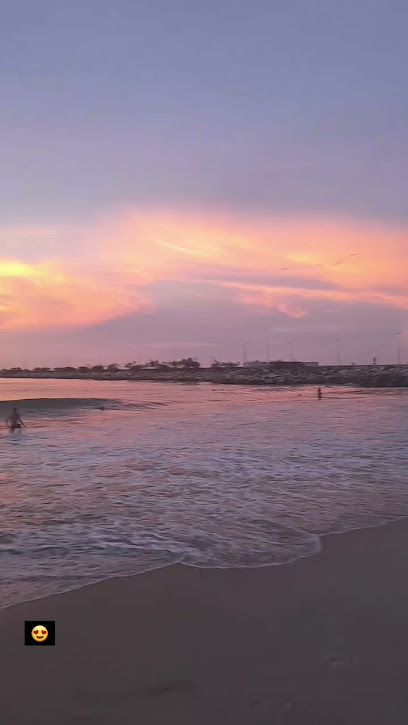
Local Phrases
-
- HelloOlá
[oh-lah] - GoodbyeTchau
[chow] - YesSim
[seem] - NoNão
[nah-oh] - Please/You're welcomePor favor/De nada
[pohr fah-vohr/dee nah-dah] - Thank youObrigado
[oh-bree-gah-doh] - Excuse me/SorryCom licença/Desculpe
[kohm lee-sen-sah/dehs-kool-peh] - How are you?Como vai você?
[koh-moh vah-ee voh-seh] - Fine. And you?Bem. E você?
[behn/eh voh-seh] - Do you speak English?Você fala inglês?
[voh-seh fah-lah een-glehs] - I don't understandEu não entendo
[eh-oo nah-oh ehn-tehn-doh]
- HelloOlá
-
- I'd like to see the menu, pleaseEu gostaria de ver o cardápio, por favor
[eh-oo goh-stah-ree-ah dee vehr oh kahr-dah-pee-oh/pohr fah-vohr] - I don't eat meatEu não como carne
[eh-oo nah-oh koh-moh kahr-neh] - Cheers!Saúde!
[sow-deh] - I would like to pay, pleaseEu gostaria de pagar, por favor
[eh-oo goh-stah-ree-ah dee pah-gahr/pohr fah-vohr]
- I'd like to see the menu, pleaseEu gostaria de ver o cardápio, por favor
-
- Help!Socorro!
[soh-koh-roh] - Go away!Vá embora!
[vah ehm-boh-rah] - Call the Police!Chame a polícia!
[chah-meh ah poh-lee-see-ah] - Call a doctor!Chame um médico!
[chah-meh oom meh-dee-koh] - I'm lostEstou perdido
[ehs-toh pehr-dee-doh] - I'm illEstou doente
[ehs-toh doh-ehn-teh]
- Help!Socorro!
-
- I'd like to buy...Eu gostaria de comprar...
[eh-oo goh-stah-ree-ah dee kohm-prahr] - I'm just lookingEstou só olhando
[ehs-toh soh oh-lahn-doh] - How much is it?Quanto custa?
[kwahn-toh kooh-stah] - That's too expensiveIsso é muito caro
[ee-soh eh mwitoo kah-roh] - Can you lower the price?Você pode abaixar o preço?
[voh-seh poh-dee ah-bah-ee-shahr oh preh-soh]
- I'd like to buy...Eu gostaria de comprar...
-
- What time is it?Que horas são?
[keh oh-rahz sah-oh] - It's one o'clockÉ uma hora
[eh oo-mah oh-rah] - Half past (10)Meio-dia
[meh-oh dee-ah] - MorningManhã
[mah-nyah] - AfternoonTarde
[tahr-deh] - EveningNoite
[noh-ee-teh] - YesterdayOntem
[ohn-tehm] - TodayHoje
[oh-zheh] - TomorrowAmanhã
[ah-mah-nyah] - 1Um
[oom] - 2Dois
[doh-ees] - 3Três
[trehs] - 4Quatro
[kwah-troh] - 5Cinco
[seeng-koh] - 6Seis
[seh-eesh] - 7Sete
[seh-teh] - 8Oito
[oy-toh] - 9Nove
[noh-veh] - 10Dez
[dehz]
- What time is it?Que horas são?
-
- Where's a/the...?Onde fica o/a...?
[ohn-dee fee-kah oh/ah] - What's the address?Qual é o endereço?
[kwahl eh oh ehn-deh-reh-soh] - Can you show me (on the map)?Você pode me mostrar (no mapa)?
[voh-seh poh-dee meh moh-strahr/noh mah-pah] - When's the next (bus)?Quando é o próximo (ônibus)?
[kwahn-doh eh oh proh-ksih-moh/oh-nee-boos] - A ticket (to ....)Um bilhete (para ....)
[oom bee-yeh-teh/pah-rah]
- Where's a/the...?Onde fica o/a...?
History of Praia de Iracema
-
Before the arrival of Europeans, the area now known as Praia de Iracema was inhabited by indigenous peoples, particularly the Potiguara and Tapuia tribes. The region's name, 'Iracema', comes from the indigenous language, meaning 'honey' or 'honeyed mouth'. In the 16th century, Portuguese explorers, led by Afonso de Albuquerque, began to arrive in Brazil, establishing the first European settlements and initiating contact with local tribes.
-
In the 17th century, the Portuguese established the city of Fortaleza, initially as a military outpost. Praia de Iracema served as a strategic location for the Portuguese to defend against invasions from Dutch and French forces. The construction of forts, such as the Forte de Nossa Senhora da Assunção in 1680, marked the beginning of urban development in the area, leading to increased trade and settlement.
-
The 1800s witnessed significant cultural growth in Praia de Iracema and Fortaleza as a whole. The neighborhood became known for its vibrant artistic community, with the establishment of theaters and galleries. This era produced influential figures in literature and music, contributing to the cultural tapestry of Ceará. The construction of the José de Alencar Theatre in 1910 exemplifies this artistic renaissance.
-
From the late 20th century onwards, Praia de Iracema underwent a transformation, transitioning from a neglected area to a thriving cultural and tourism hub. Urban revitalization projects, including the restoration of historic buildings and the development of beachfront promenades, have attracted both locals and tourists. This resurgence has reinforced Praia de Iracema's identity as a center for nightlife, art, and cultural events.
-
Despite its revitalization, Praia de Iracema faces modern challenges, such as urban violence and socioeconomic disparities. Community initiatives and local government efforts aim to address these issues by promoting social programs, cultural festivals, and investments in public safety. The neighborhood continues to be a symbol of resilience, showcasing the rich history and cultural heritage of Fortaleza.
Praia de Iracema Essentials
-
Praia de Iracema is easily accessible from various neighborhoods in Fortaleza. If you are arriving from the city center, you can take a taxi or use ride-sharing apps like Uber, which are widely available. Public buses also connect the city center to Praia de Iracema, with routes such as 010 and 011 being popular. For those coming from the Pinto Martins International Airport, taxis and shuttle services are available, and the journey takes around 30 minutes, depending on traffic.
-
Praia de Iracema is a pedestrian-friendly neighborhood, and walking is one of the best ways to explore its vibrant streets and beachfront. For longer distances, local buses are available, and many routes pass through the area. Additionally, bicycles can be rented from several local shops or through Fortaleza's bike-sharing program, which offers a network of bike lanes along the waterfront.
-
While Praia de Iracema is generally safe, tourists should remain vigilant. Areas closer to the beach tend to be safer, especially during the daytime. However, it is advisable to avoid walking alone at night, particularly in the less populated stretches or back streets. Be cautious of pickpockets in crowded areas and never leave valuables unattended on the beach. High-crime areas nearby include parts of the surrounding neighborhoods, which should be avoided after dark.
-
In case of an emergency, dial 190 for police assistance or 192 for medical emergencies in Brazil. For fire emergencies, call 193. The nearest hospital is Hospital São José de Doenças Infecciosas, which is equipped to handle urgent care. It's advisable to carry a copy of your travel insurance and important documents. Pharmacies are readily available for minor health issues, and many staff can assist in English.
-
Fashion: Do wear light and comfortable clothing suitable for the beach. Don't wear overly revealing outfits away from the beach. Religion: Do respect local customs, especially when visiting churches nearby. Don't take photos inside places of worship without permission. Public Transport: Do give your seat to the elderly and women with children. Don't speak loudly or disturb others. Greetings: Do greet with a friendly 'Olá' and a smile. Don't be overly formal, as casual greetings are common. Eating & Drinking: Do try local dishes like peixe frito (fried fish) and drink coconut water. Don't drink tap water; always opt for bottled water.
-
To experience Praia de Iracema like a local, visit the nearby Feira de Artesanato, where you can find handmade crafts and local food. Attend a sunset at the statue of Iracema, a popular gathering spot. Join locals at beach bars for a live music experience, particularly on weekends. Don't miss out on trying the famous 'caipirinha' cocktail at one of the beachfront bars, and always engage with locals to learn about hidden gems in the area.
Nearby Cities to Praia de Iracema
-
Things To Do in Recife
-
Things To Do in Salvador
-
Things To Do in Brasília
-
Things To Do in Albina
-
Things To Do in Moengo
-
Things To Do in Brokopondo
-
Things To Do in Mariënburg
-
Things To Do in Lelydorp
-
Things To Do in Paramaribo
-
Things To Do in Rio de Janeiro
-
Things To Do in Skeldon
-
Things To Do in São Paulo
-
Things To Do in New Amsterdam
-
Things To Do in Kwakwani
-
Things To Do in Ituni








